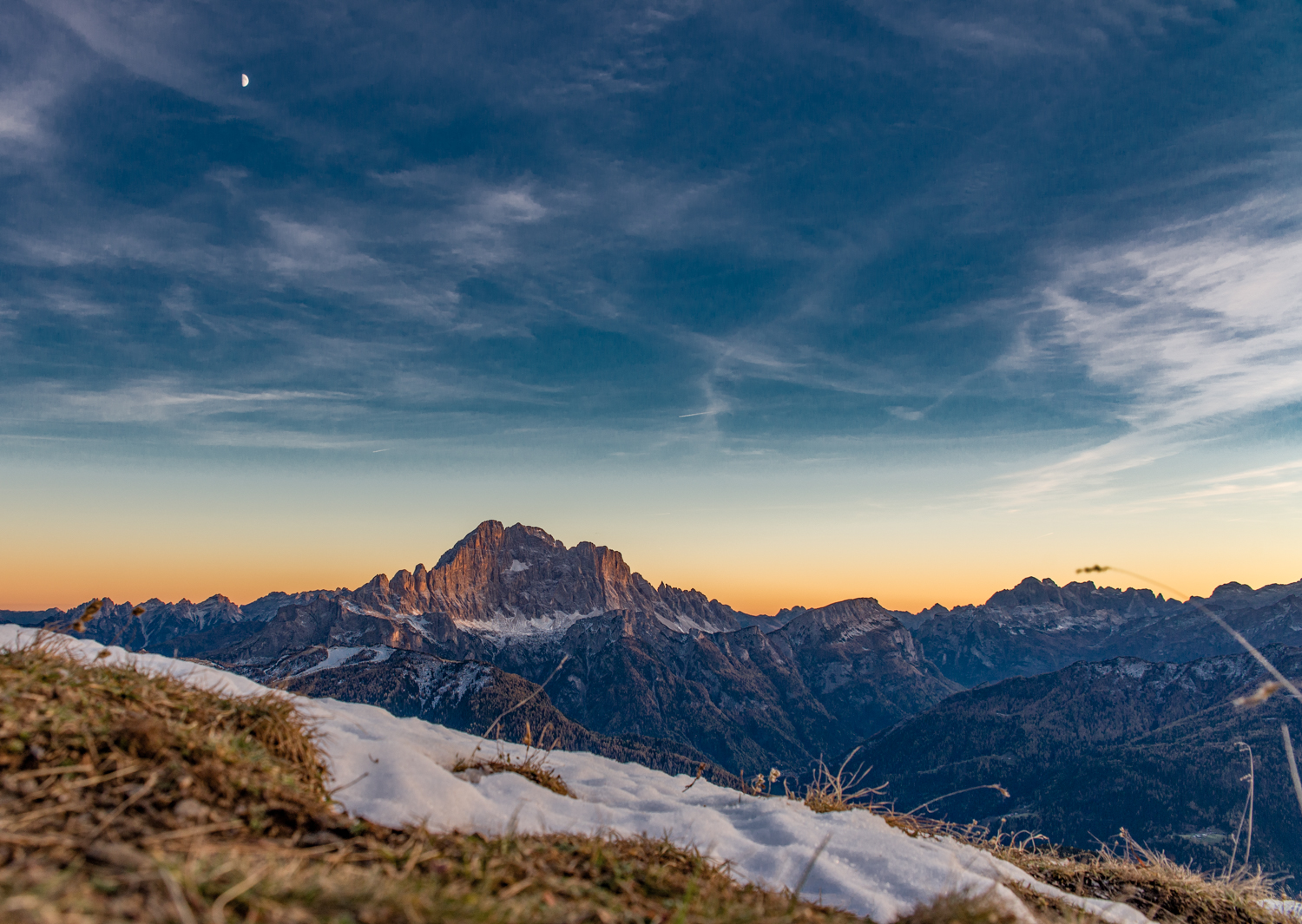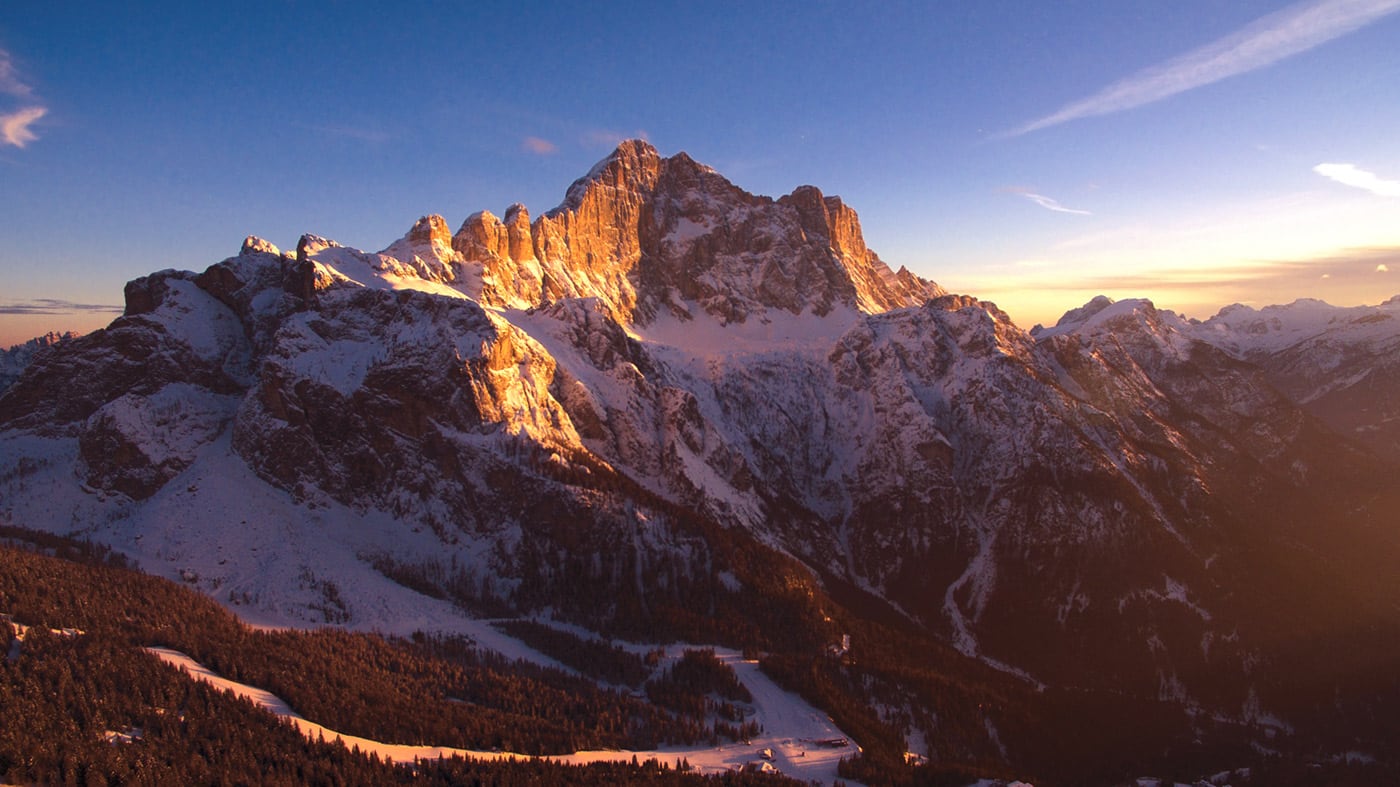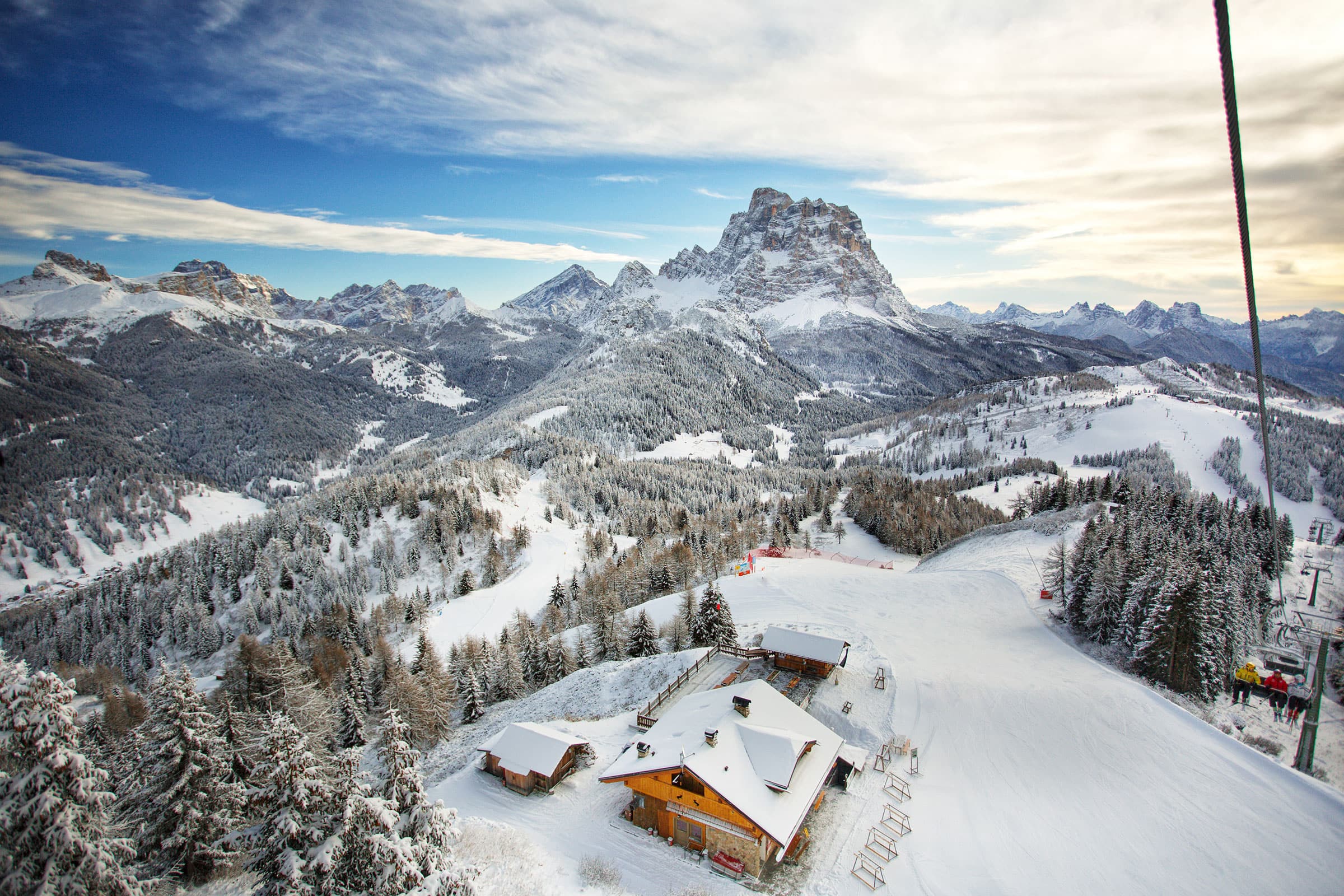
Take a deep breath. What you see before you are the famous Dolomites, the Pale Mountains that have fascinated generations of climbers, artists and travellers. Home to thousands of people, they are one of the top tourist destinations in the Alps and the world.
ln 2009 the Dolomites were inscribed on the UNESCO World Heritage List, official acknowledgement of the outstanding value these mountains and their wealth of geology and beautiful scenery have for the whole of mankind. Inscription does not mean the site comes under the protection of UNESCO, it means it recognises its exceptional qualities which deserve greater knowledge and understanding so they can be sympathetically enhanced and passed on to future generations. Walking in the Dolomites, you are overwhelmed by the power of the sublime, as you realise that the slope you see today was actually the escarpment of a tropical atoll that existed 230 million years ago.
The UNESCO Dolomites site is probably one of the most complex sites in the world as far as its management is concerned. It is a serial Property, consisting of nine Systems that cover 142 thousand hectares, five provinces and three regions. The UNESCO Dolomites Foundation was set up in accordance with UNESCO upon receiving recognition to help the different areas run the Property together in a coordinated manner. It is not the Dolomites tourist board or a control body. It believes in managing the Property through networks, espousing the principle that cooperation, rather than boxing off the individual areas so they are in competition with each other, is the key to success.
To achieve this, the Foundation develops and coordinates a whole variety of initiatives and activities, giving each of the areas in the UNESCO Dolomites the chance to take part in these projects and good practices which are organised to help communicate, enhance and manage the World Heritage Site. Its objective is to raise awareness among the Dolomite communities of the outstanding universal values that prompted inscription and the part they play in passing them on to future generations. Everyone, residents and visitors alike, shares the responsibility of this legacy and its conservation and sustainable development. Many projects have already been successfully brought to an end and just as many are in the pipeline in the different areas.
If you’d like to get involved, the UNESCO Dolomites Foundation would love to hear from you.

ALPENGLOW

THE PHENOMENON THAT INSPIRES POETS AND TRAVELLERS FROM ALL OVER THE WORLD
At dawn and dusk, the Dolomites around Alleghe become a spectacular light show, tinged with myriad shades of pink that gradually turn into a deep red glow. This is the Alpenglow, an incredible natural phenomenon that never fails to stop people in their tracks as they take a breath and drink in the unforgettable beauty of the Dolomite landscape.
The name in Italian is ‘enrosadira’, from the local Ladin words ‘enrosadöra’ and ‘rosadüra’ which mean “becoming pink”. The effect changes according to the time of the year and signals the passing of time and the seasons for the inhabitants of Alleghe.
This phenomenon is caused by the geological conformation of the Dolomite rock faces. They are made of dolomite rock, a mineral which contains a calcium magnesium carbonate compound. This special chemical structure refracts the sunlight, creating the distinctive red and orange colours which have inspired poets and travellers from all over the world. Every day is different, as the spectacular shades vary according to the position of the sun, the angle of its rays, the weather and the air.
The awe-inspiring northwest face of the Civetta group in particular, whose base is an incredible four kilometres and which stands over one thousand metres high, is one of the most magical and symbolic settings in the entire Dolomites to experience the Alpenglow. In winter, watching the intense red glow of the sunset from the terrace of a mountain refuge after a day’s skiing or as you are strolling around the lovely frozen lake in Alleghe, is a truly memorable experience and reminds us of the magical and amazing power of nature which here seems out of this world.
SKIING IN THE DOLOMITES UNESCO HERITAGE

SKI CIVETTA
The Civetta Ski Area, with 72 km of slopes, belongs to the largest ski area in the Veneto region.
Thanks to its location, is quick and easy to reach. It is considered the exclusive gateway to the Dolomiti Superski circuit, where you will find more than 1200 kilometres of runs in the largest ski carousel in the world.
Not even the most demanding lovers of the mountains could ask for more: small romantic villages nestling in unspoiled scenery surrounded by some of the most beautiful peaks in the Dolomites, like Pelmo, Civetta and the queen of the Dolomites, her Majesty the Marmolada


